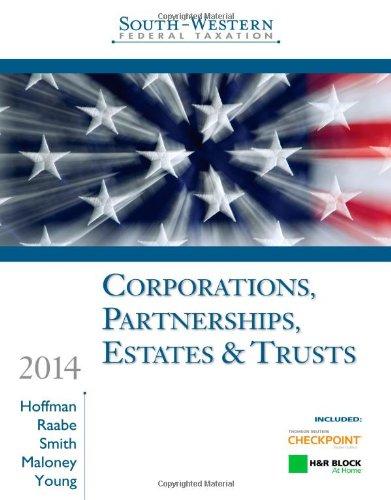Research Problem 6. Walter Albers, a physician, and his wife, Maud, owned and occupied a house in
Question:
Research Problem 6. Walter Albers, a physician, and his wife, Maud, owned and occupied a house in Hampton, Virginia, from 2007 through 2010. Dr. Albers’s medical practice was located in a rental office building in Hampton.
In January 2011, Walter accepted employment in a medical practice in Richmond (75 miles from Hampton). During the same month, he and Maud purchased a home in Richmond that they occupied in February 2011. They did not sell the Hampton home because they planned to live there after retirement. Walter became dissatisfied with his employment in Richmond, so he quit and became a partner in a three-physician medical practice in West Point, Virginia (75 miles from Hampton and 30 miles from Richmond).
Maud moved back into the Hampton residence. Walter commuted daily to his medical practice in West Point from either the residence in Richmond or the residence in Hampton.
He normally spent four nights each week with Maud in the Hampton house and three nights each week by himself in the Richmond house. Maud occasionally spent a few nights at the Richmond residence during the periods Walter was there. They did not sell the Richmond house because it was closer to Walter’s West Point office.
Even though Maud moved back to the Hampton house and Walter lived there part of the time, they retained the following associated with the Richmond house:
• Address listed on their Federal and state income tax returns.
• Address listed on their driver’s licenses, automobile registrations, and voter registration cards.
• Address listed for their bills and correspondence.
• Location of their bank accounts.
They continued to use the Richmond address so that they would have a single address for all of their correspondence. Although Maud attended church in Hampton, Walter was not a member.
In October 2013, Walter retired, and the Albers moved to Tucson. They listed both houses for sale. The closing for the Hampton house was on December 15, 2013, and resulted in a realized gain of $650,000. On their 2013 Form 1040, they reported a recognized gain of $150,000 ($650,000 − $500,000 § 121 exclusion).
The IRS has concluded that the sale does not qualify for § 121 treatment because the Hampton house was not the principal residence of Walter and Maud for at least two years during the five-year period ending December 15, 2013. Evaluate the positions of the Albers and the IRS.
Step by Step Answer:

South-Western Federal Taxation 2014 Corporations Partnerships Estates And Trusts
ISBN: 9781285424484
37th Edition
Authors: William H. Hoffman Jr., William A. Raabe, James E. Smith, David M. Maloney, James C. Young






